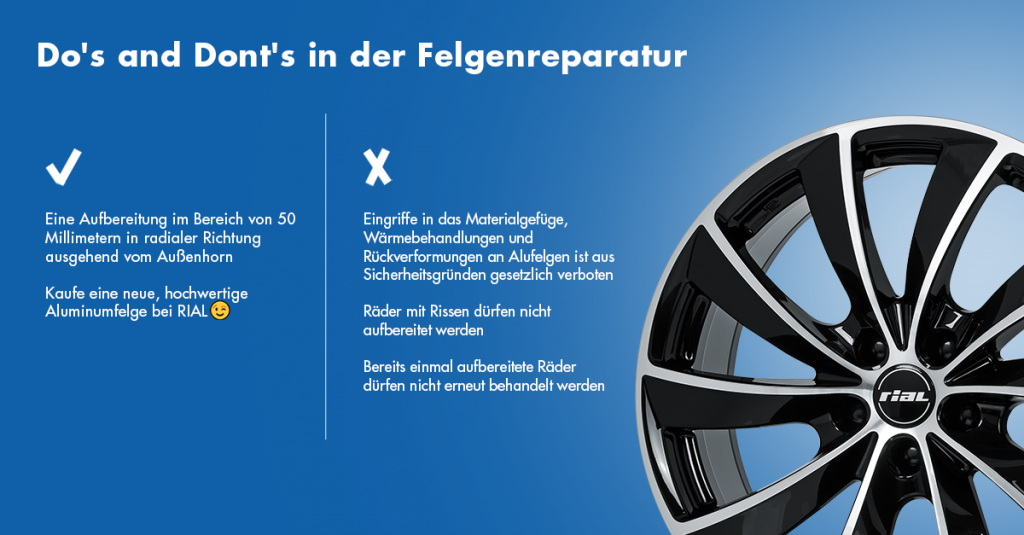Extreme Caution When Repairing Wheel Rims
Safety always comes first – especially when it comes to heavily stressed alloy wheels. This is why wheel rim repairs should be approached with the utmost caution. It is understandable that a vehicle owner may want to make up for the careless moment in which they drove their beautiful wheels a bit too close to the curb. Anyone wishing to actually repair an alloy wheel, however, should turn to a specialist or only conduct the repair independently knowing exactly what they are doing and what they are allowed to do.
As a rule, heat treatment, reshaping, and interventions in the material structure of aluminum wheels are against the law for safety reasons. Alloy wheels may only be visually altered in accordance with the manufacturer information and the most important rule, which states that the maximum allowance for treating damage to the base is one millimeter deep. The method of choice should be the TÜV-certified rotary grinding method. The driver can then hit the road without the fear of being in a legal gray zone.

Other rules mandate, for instance, that the concentricity and axial deviations be determined prior to any treatment in accordance with DIN 70 020, that wheels with cracks may not be treated, and that treatment is only allowed within 50 millimeters radially outward from the outer flange. Additionally, varnish work may not last longer than 40 minutes or exceed 90 degrees Celsius. And crucially, wheels that have already been repaired once may not be treated again.
Due to the technical challenge of wheel rim repairs and the legal situations, vehicle owners should carefully consider whether it might indeed be better to replace damaged wheels with brand-new ones and rely on the guaranteed safety of a RIAL alloy wheel.


